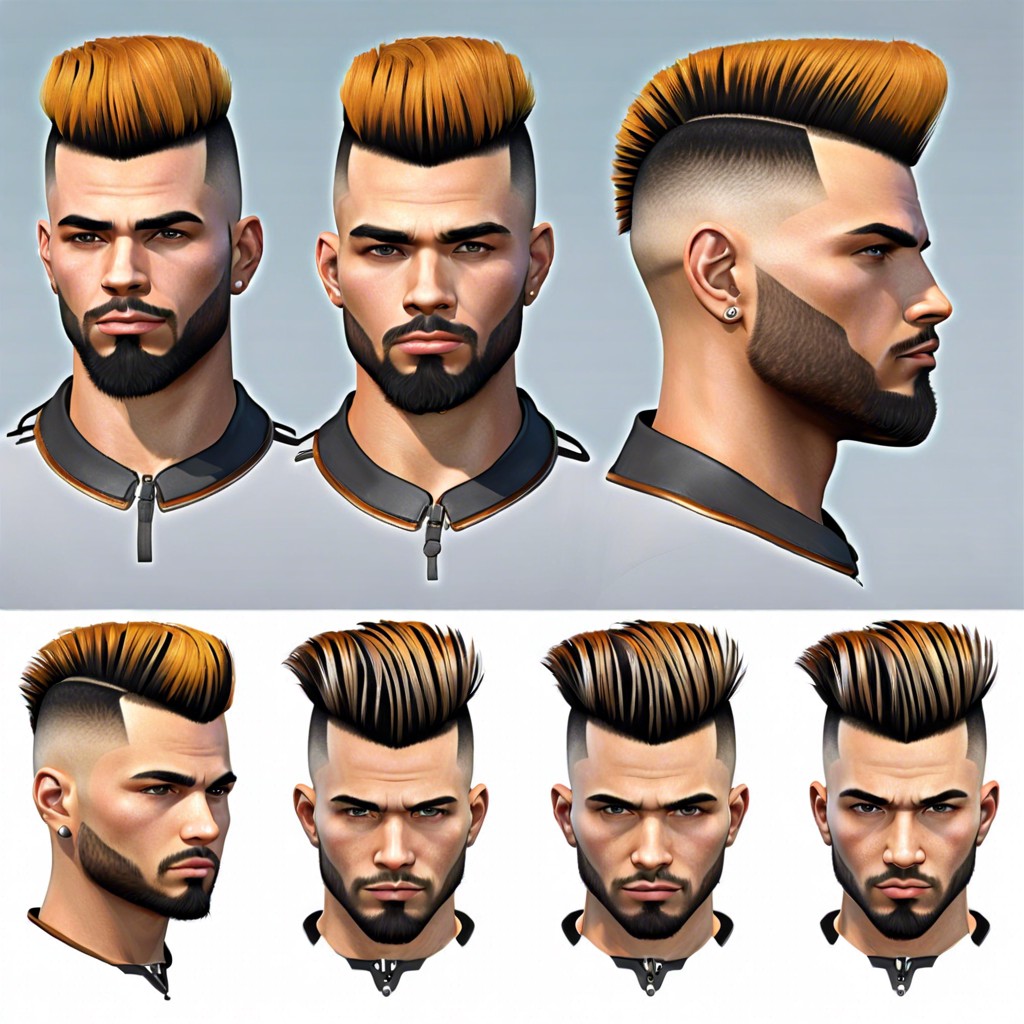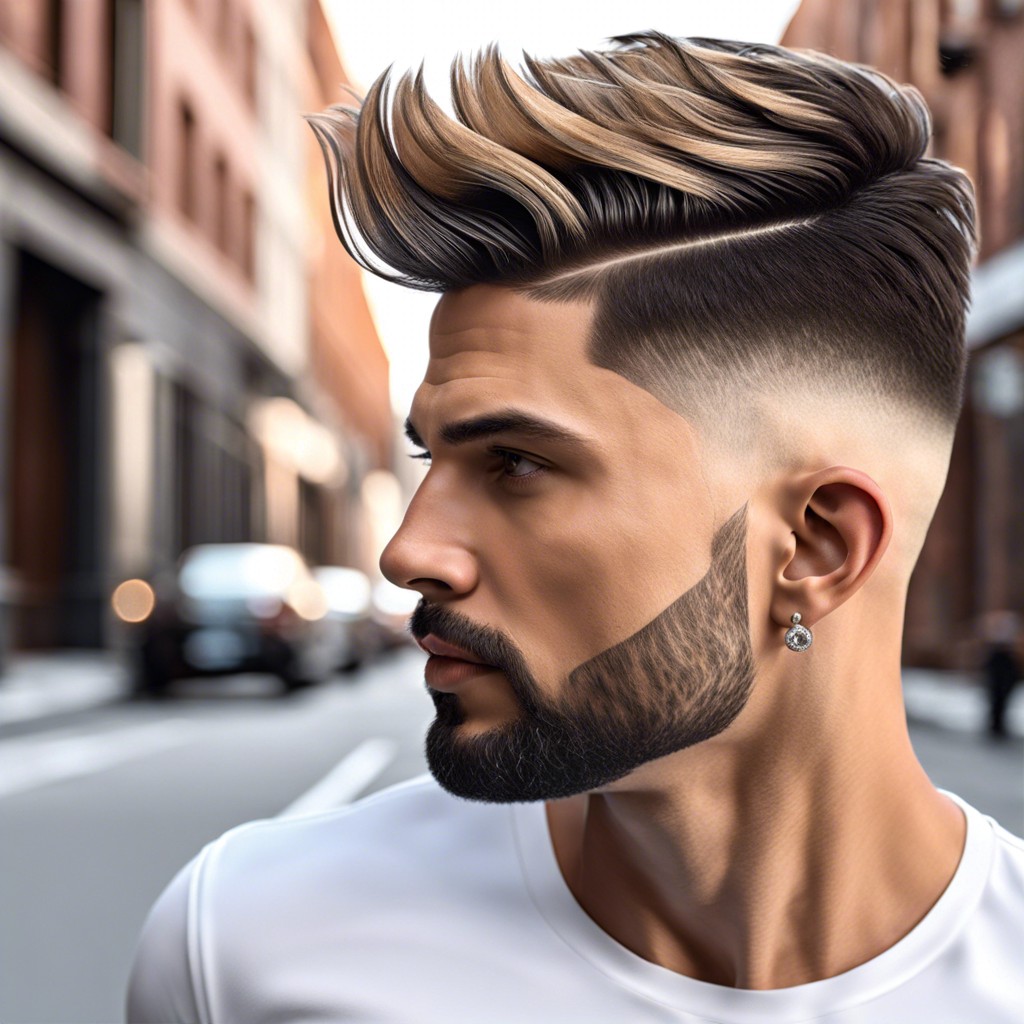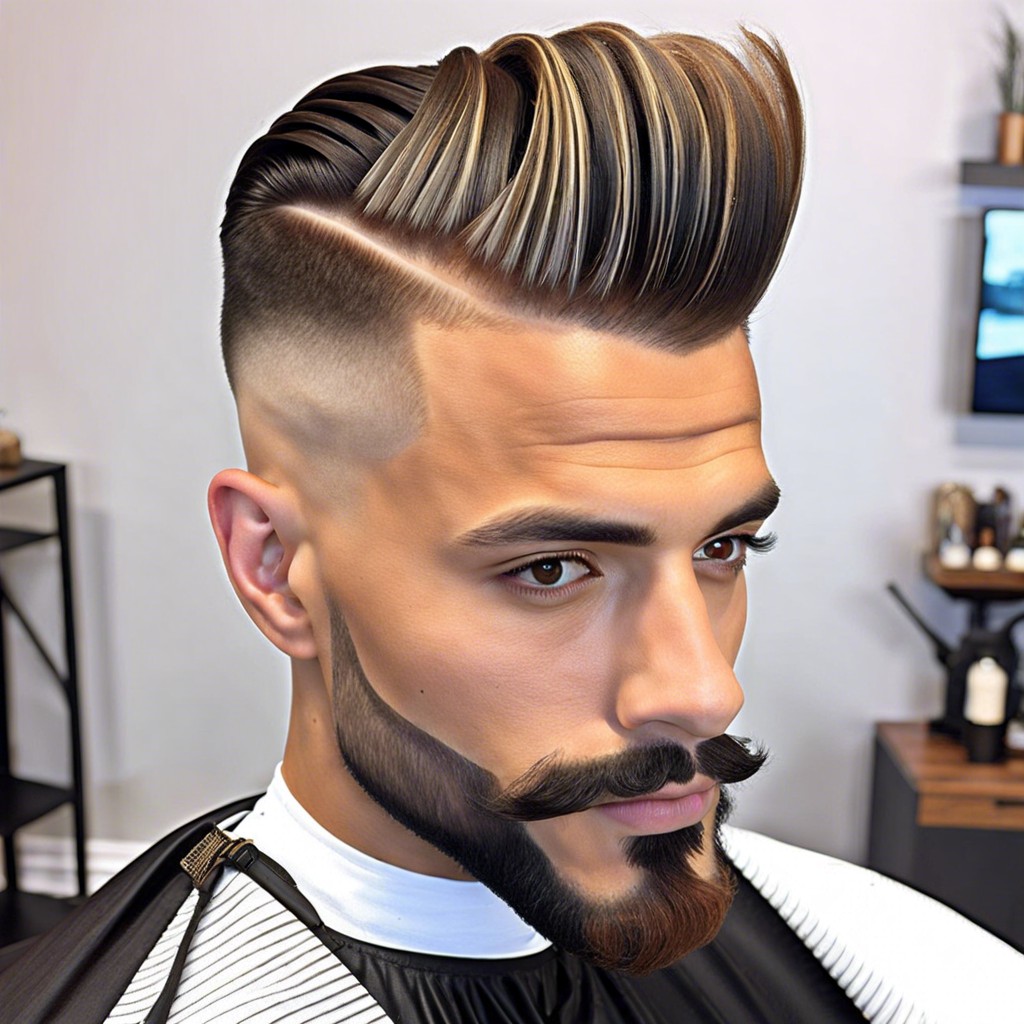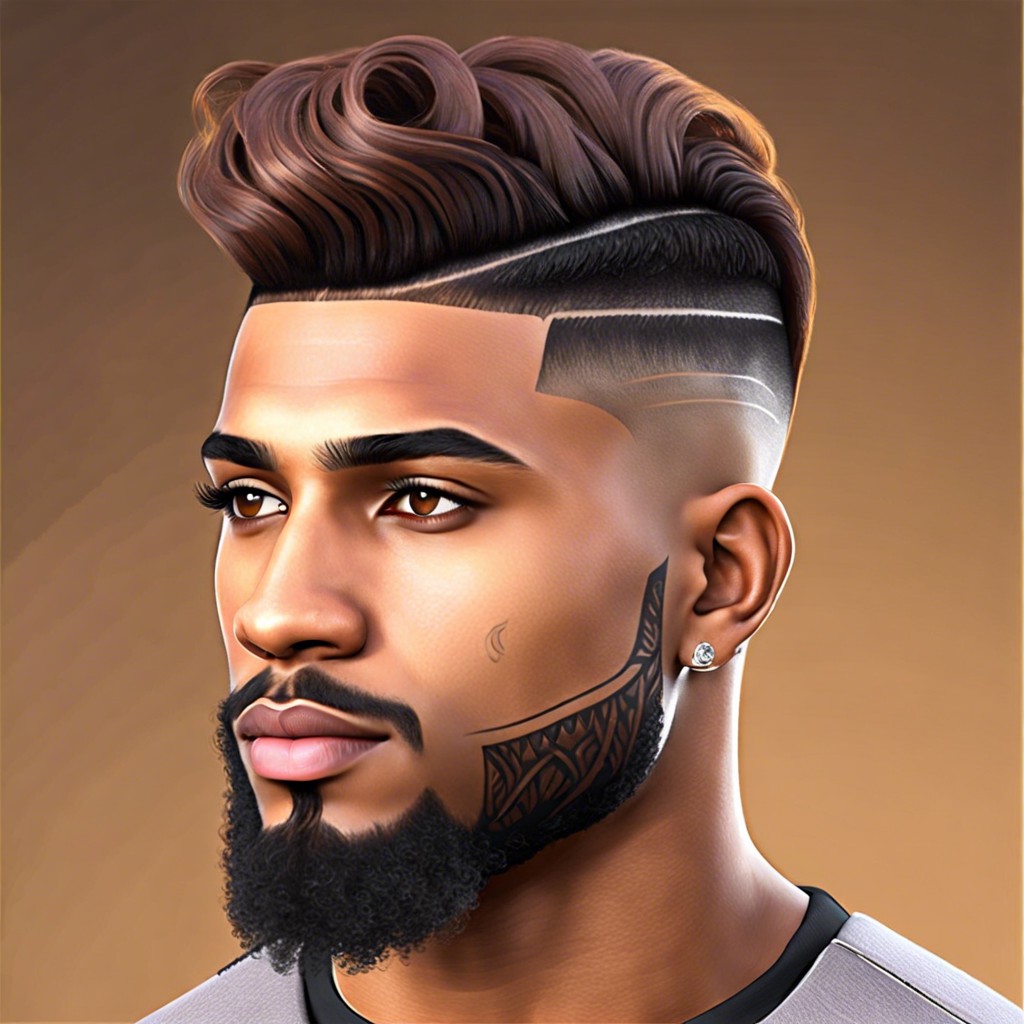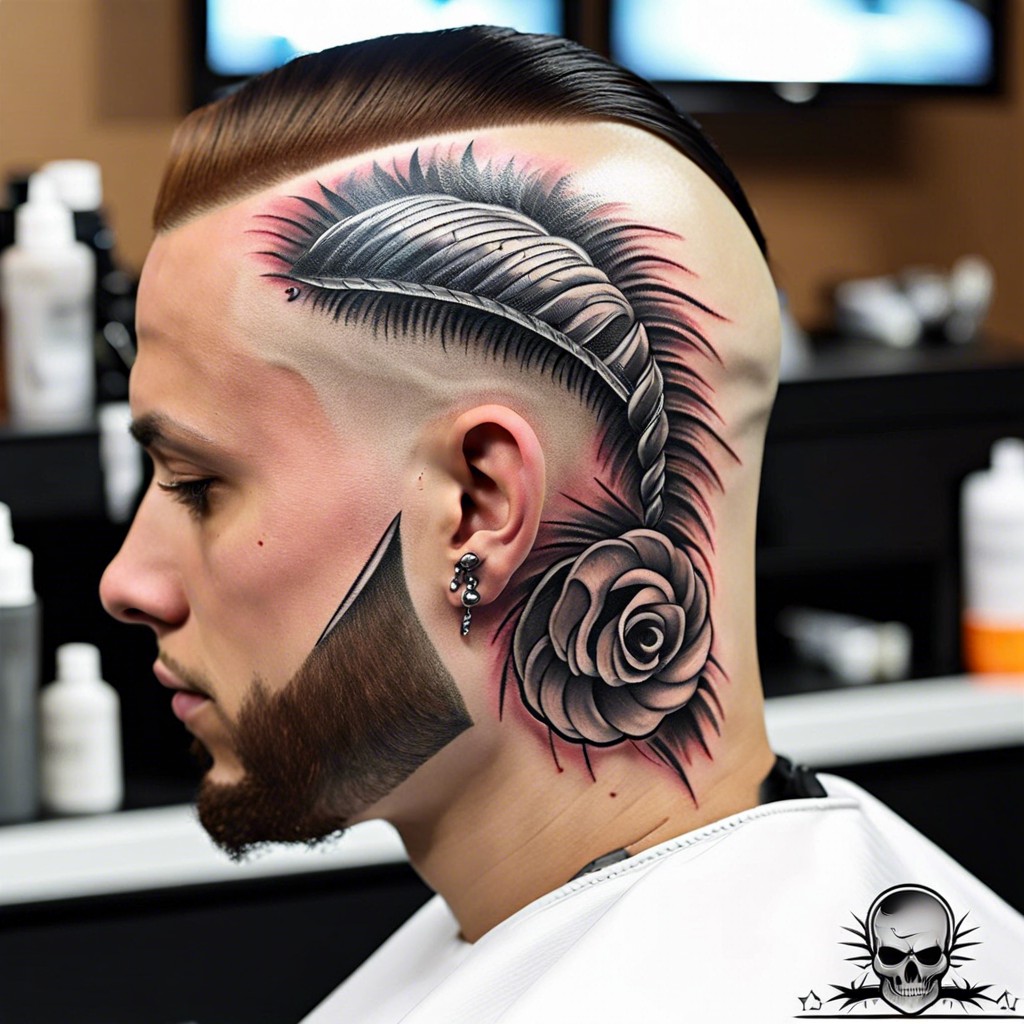Discover the sleek and versatile drop fade haircut, a modern twist on traditional fading techniques that adds depth and contour to your hairstyle.
Definition of a Drop Fade Haircut
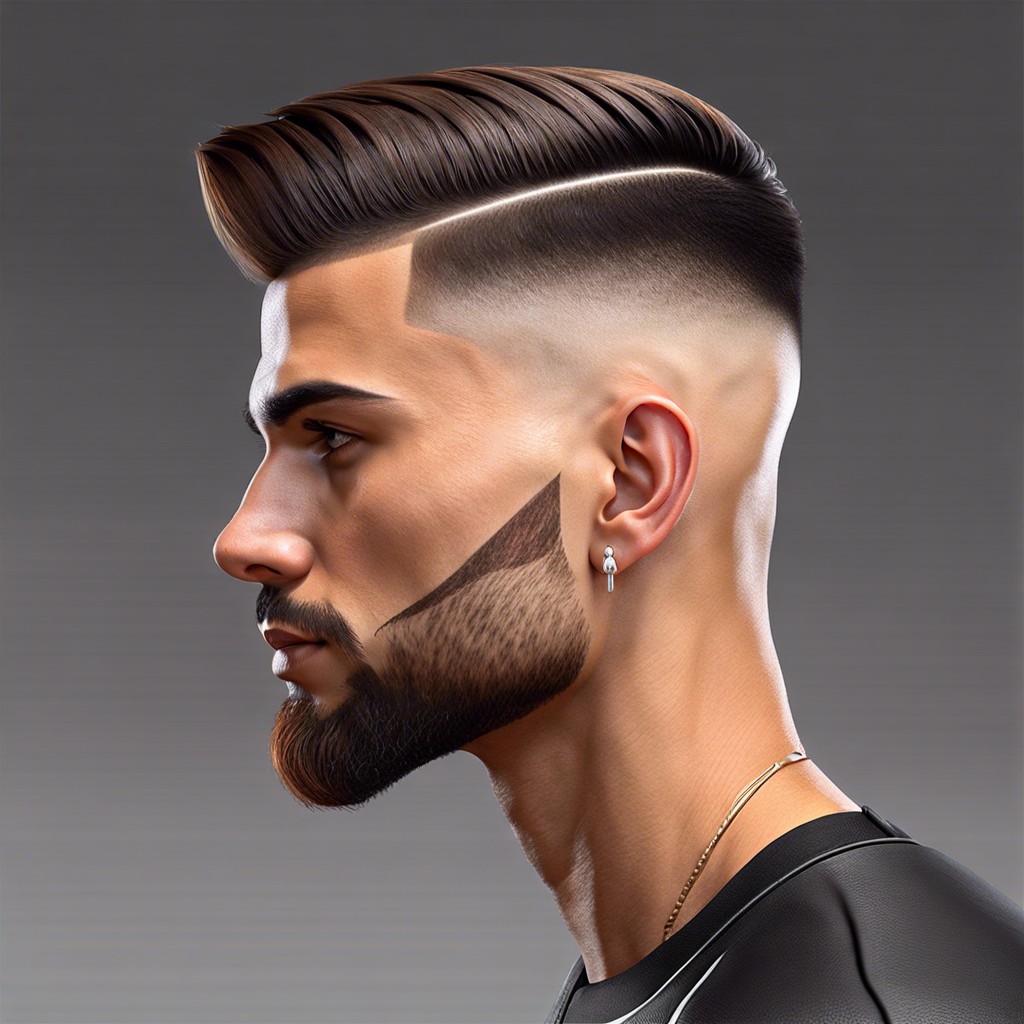
A drop fade is characterized by the hair gradually decreasing in length around the back and sides of the head, creating a sleek arc that contours to the natural shape of the skull. This fade style appears to ‘drop’ behind the ears, establishing a smooth transition from longer hair on top to short or even skin-level hair at the bottom. It provides a modern, clean look that highlights the hair on top while giving a sharp, tailored edge to any haircut.
History and Origins of the Drop Fade Style
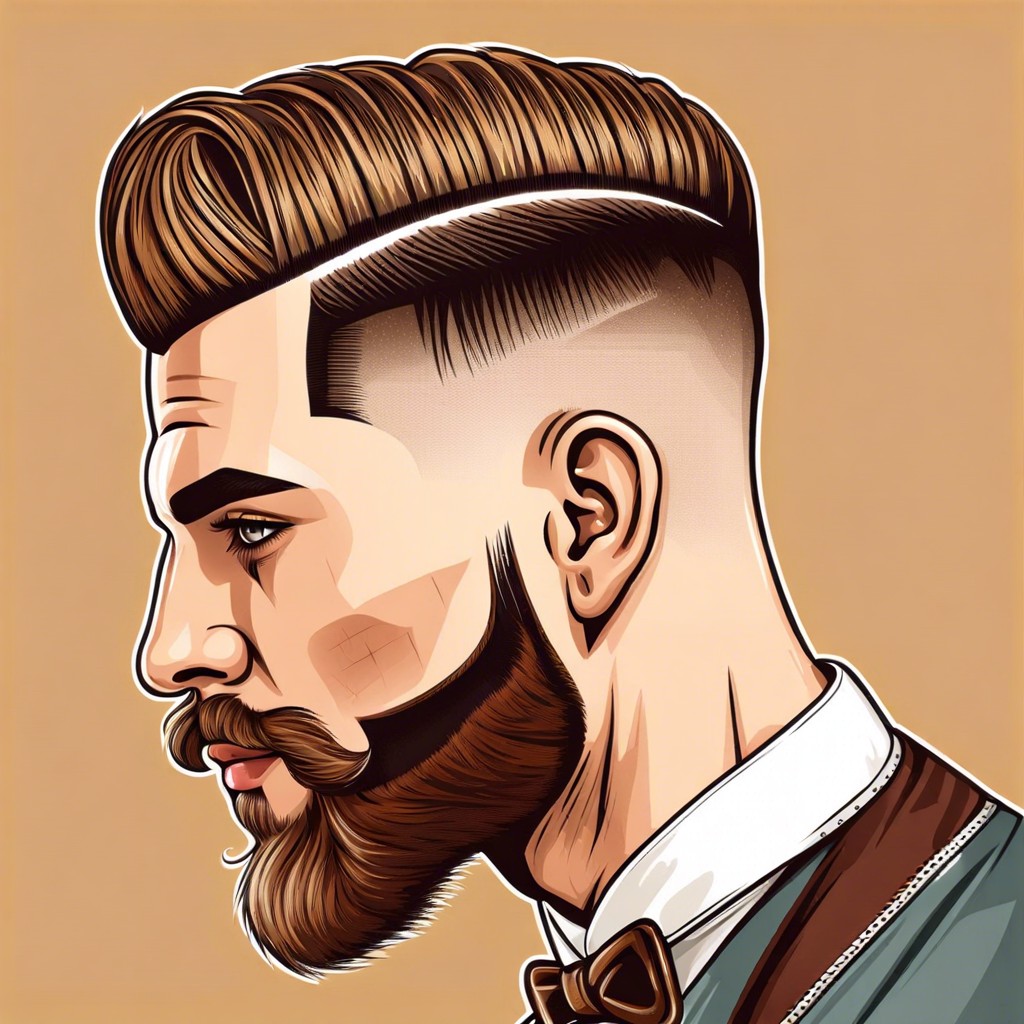
The drop fade arose from urban barbering culture, gaining popularity in the early 2000s. It’s a derivative of the classic fade, adapted to create a more pronounced arc that contours the skull.
This modern twist on fading techniques has roots in both hip-hop and athletic communities, where it became a symbol of sharp, edgy style.
Comparison Between a Classic Fade and a Drop Fade
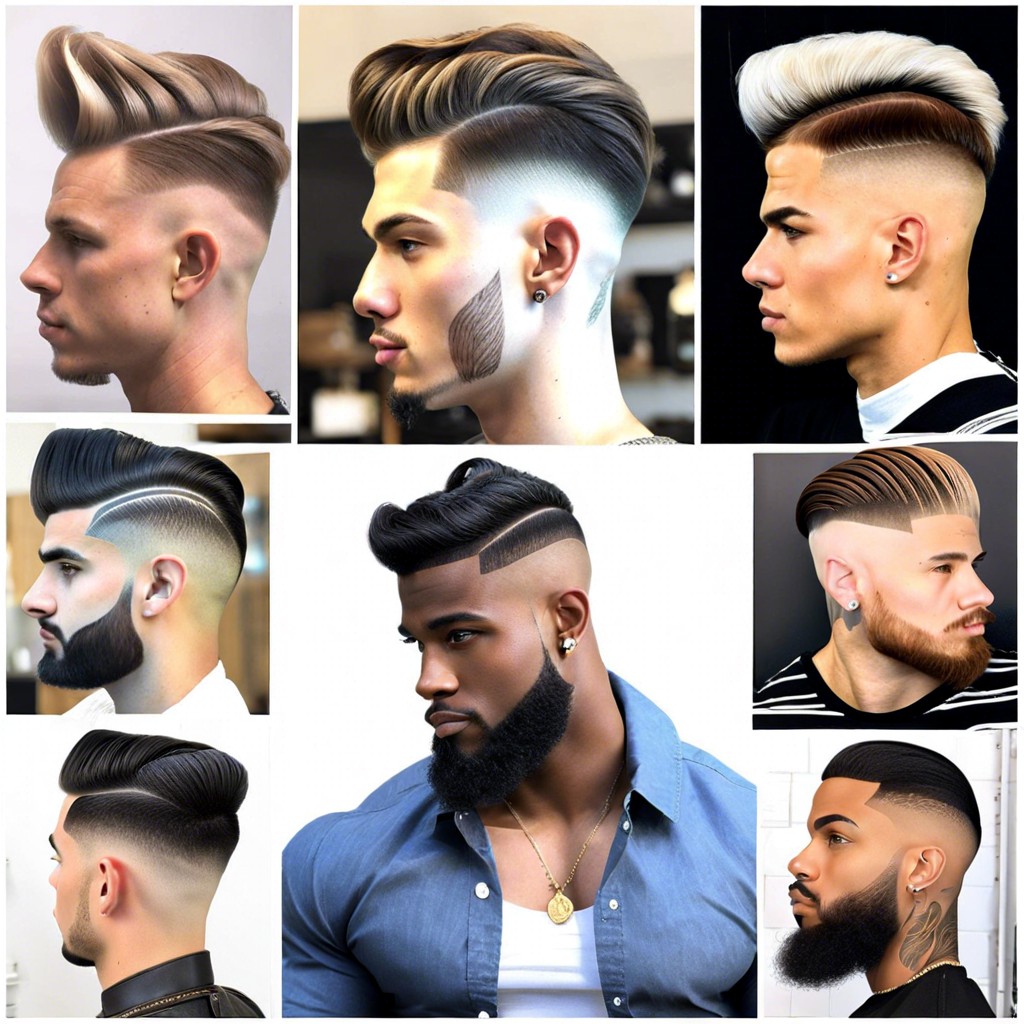
A classic fade typically features a gradual shortening of hair from the bottom up, maintaining a uniform transition around the head. In contrast, the drop fade lowers behind the ear, creating a curved taper that follows the natural hairline and shape of the scalp. This distinctive arc differentiates the drop fade by adding a more dynamic, sculptural dimension to the haircut.
How a Drop Fade Accentuates the Shape of the Head
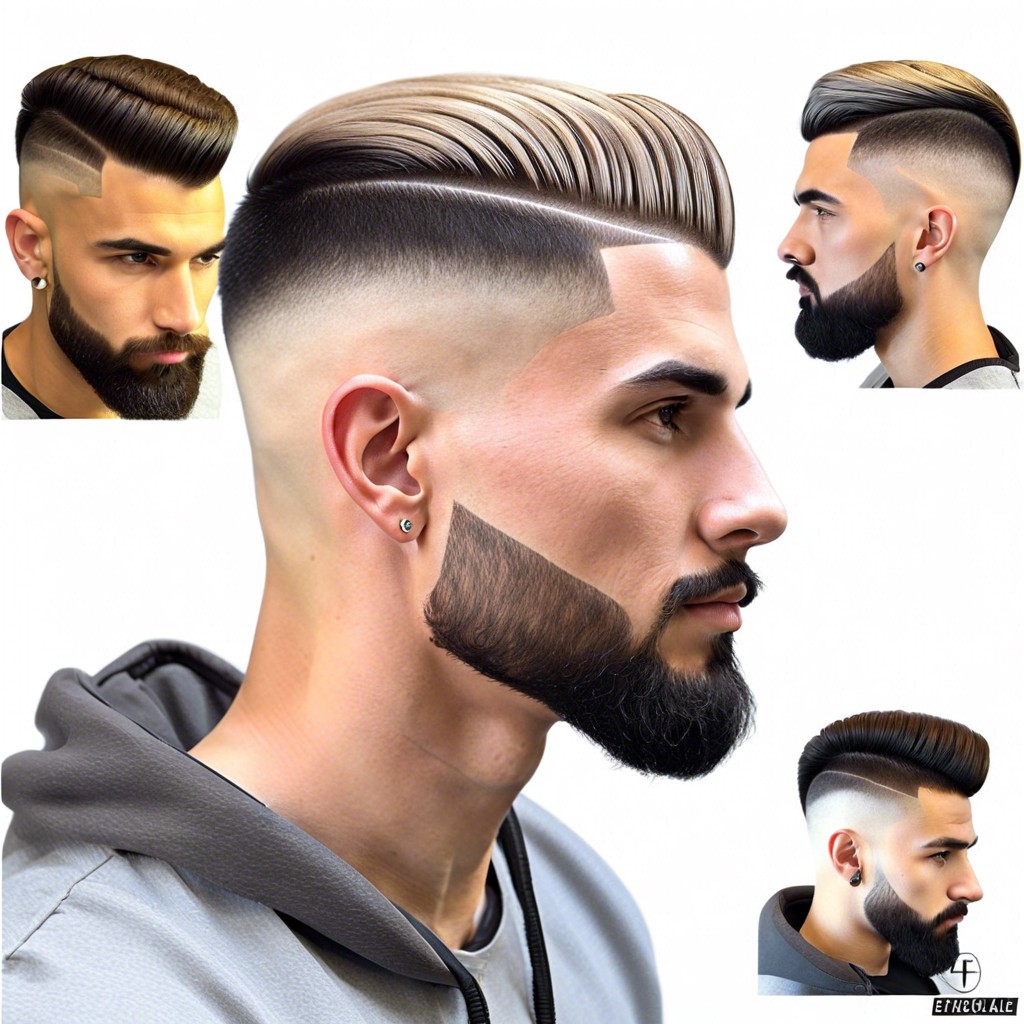
The sleek gradient of a drop fade follows the natural curvature of the head, emphasizing its contours. By starting lower at the back and around the ears, it creates a more pronounced silhouette that frames the face.
This technique ensures a smooth visual transition from the hairline to the nape, enhancing the head’s overall shape.
Popular Celebrities Who Have Worn Drop Fades
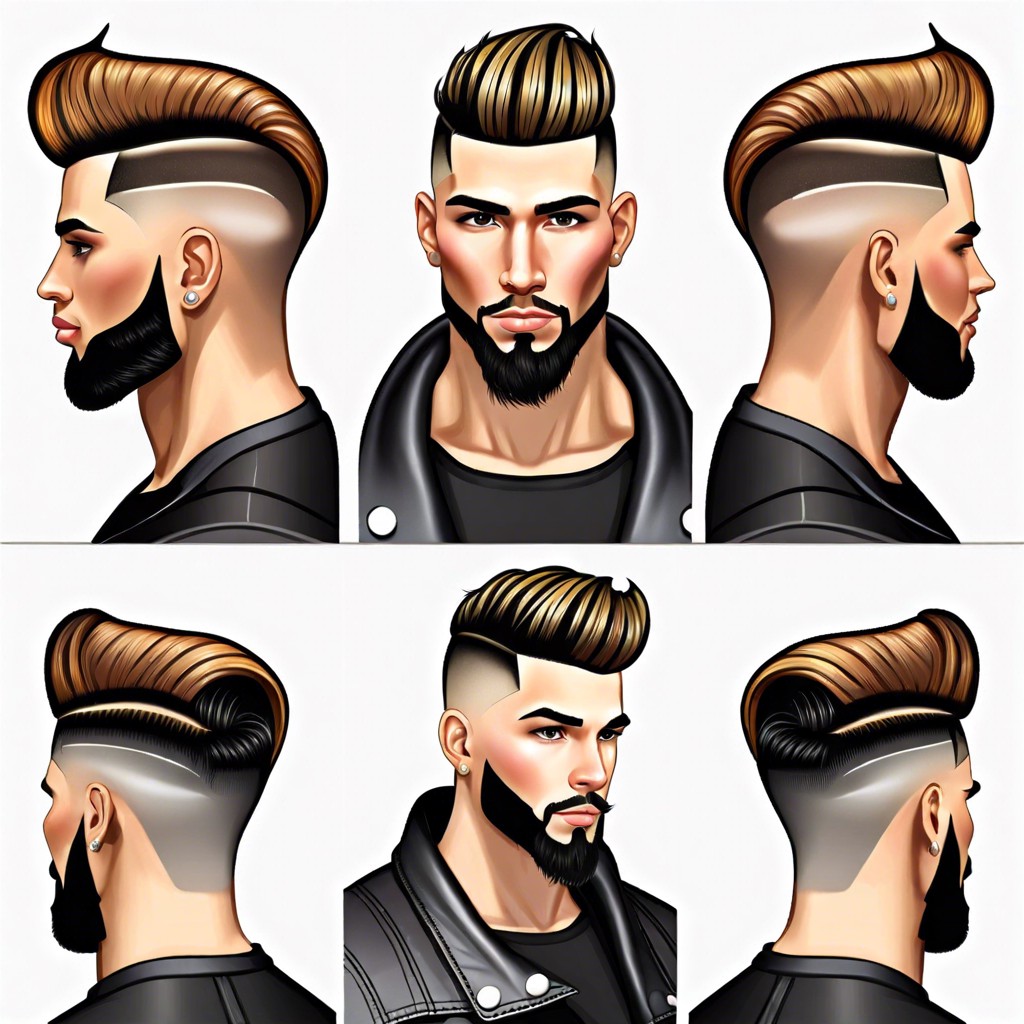
Many A-listers like Drake and David Beckham have sported the drop fade, showcasing its versatility and cool appeal.
The trend’s popularity boomed as high-profile NBA players adopted the style, highlighting their dynamic personal brands.
Brad Pitt’s take on the drop fade demonstrated its adaptability to different age groups, cementing the style’s broad allure.
Drop Fade Variations for Different Hair Textures
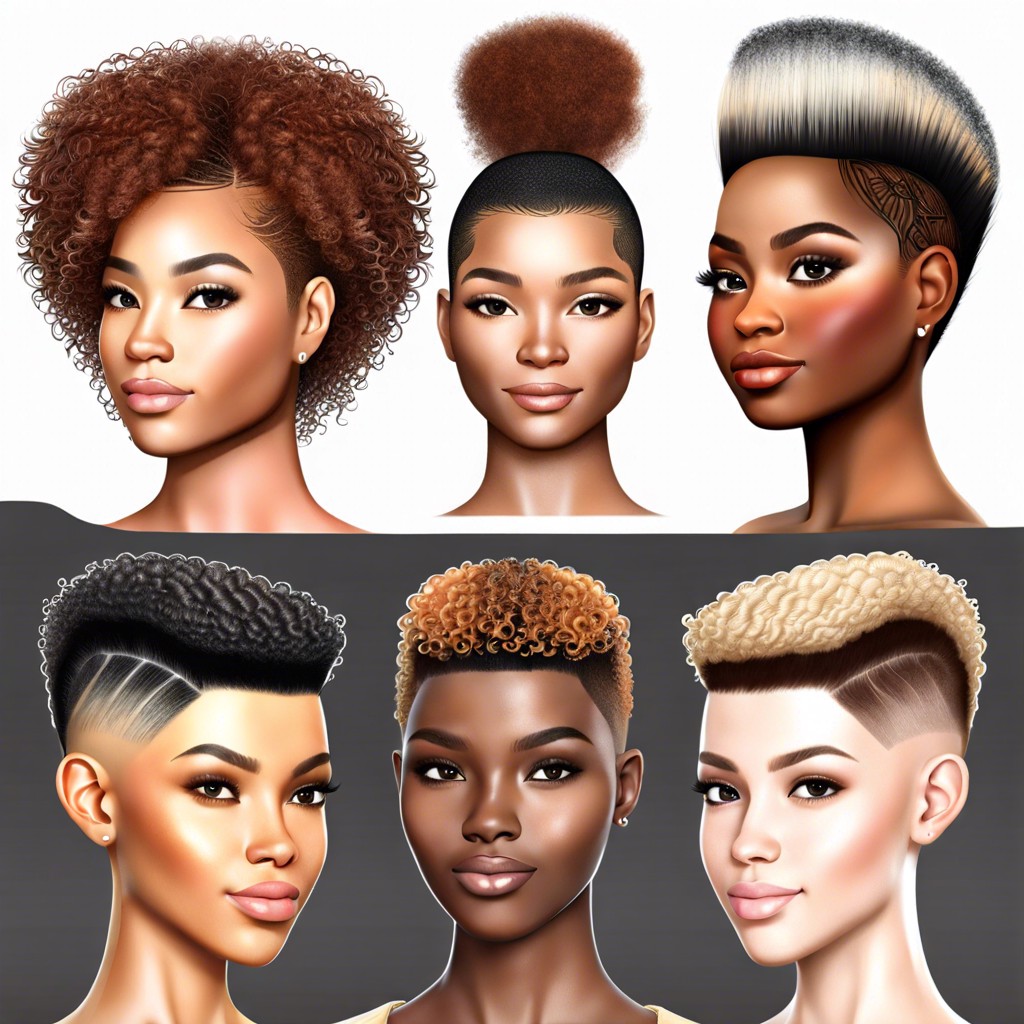
Curly textures can elevate the contrast of a drop fade, adding visual depth to the style’s gradient.
Straight hair offers a sleek and precise drop fade, allowing for a more nuanced transition in lengths.
Coarse or thick hair requires expert fading to achieve a smooth drop, ensuring the gradient appears intentional and not abrupt.
Incorporating a Drop Fade With Different Hairstyles (pompadour, Mohawk, Etc.)
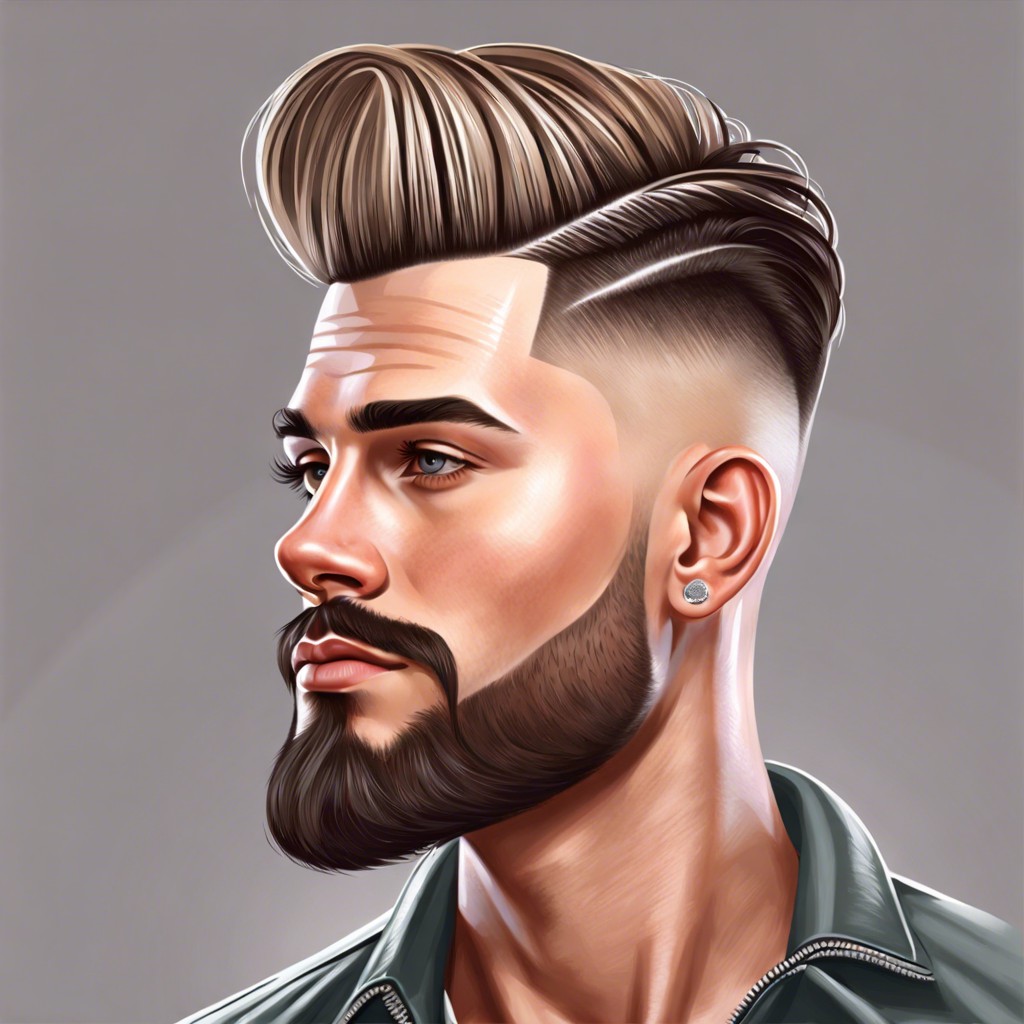
A drop fade seamlessly blends with a pompadour, adding a modern twist to this classic voluminous style.
When paired with a mohawk, it provides a sleek, edgy look that emphasizes the strip of longer hair.
It also complements textured tops, allowing for a smooth transition between the sharp lines of the cut and the natural hair pattern.
Drop Fade Maintenance Tips
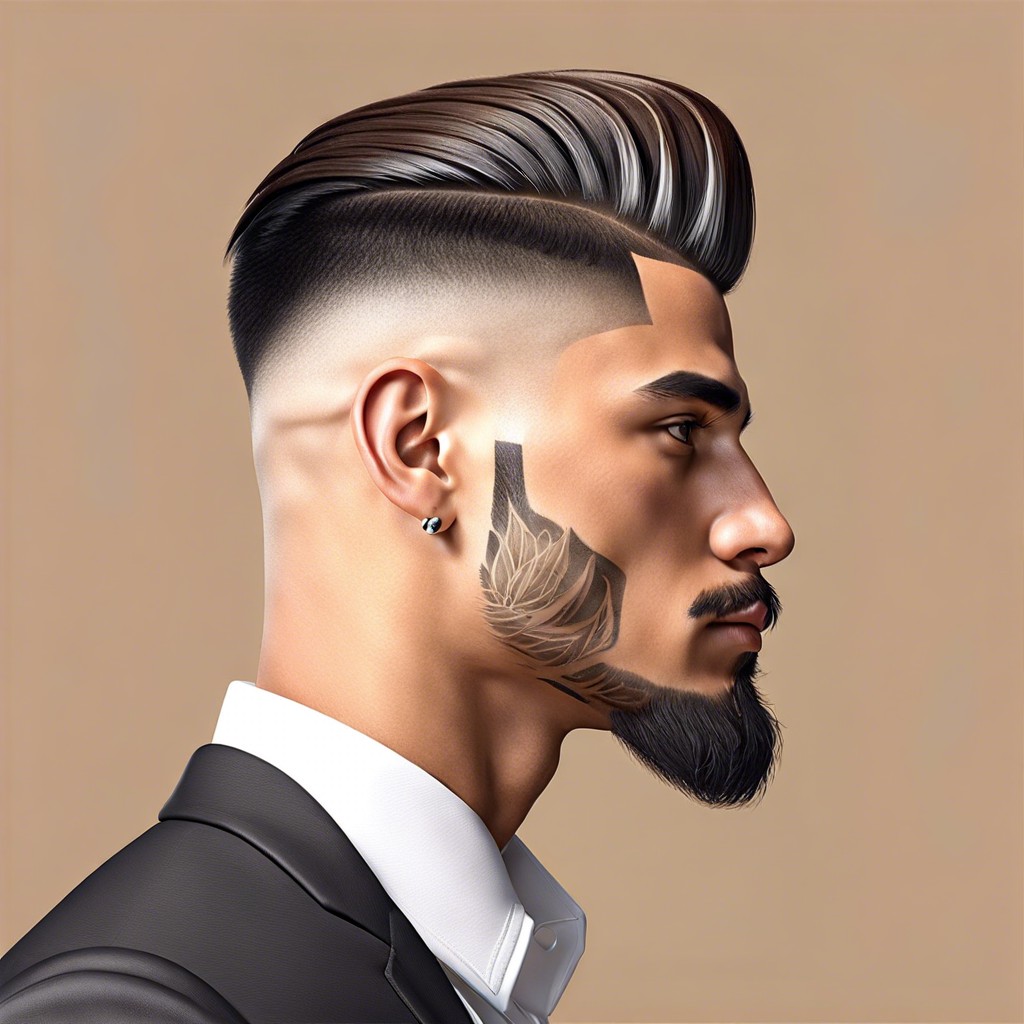
To keep the sharp contrast of a drop fade looking fresh, plan for regular touch-ups every 3 to 4 weeks.
Utilize specialized moisturizers to maintain the scalp and hair health, ensuring a neat backdrop for the fade.
Invest in a quality, adjustable hair trimmer for at-home upkeep of the fade’s perimeter between barber visits.
Styling Products Recommended for a Drop Fade Look
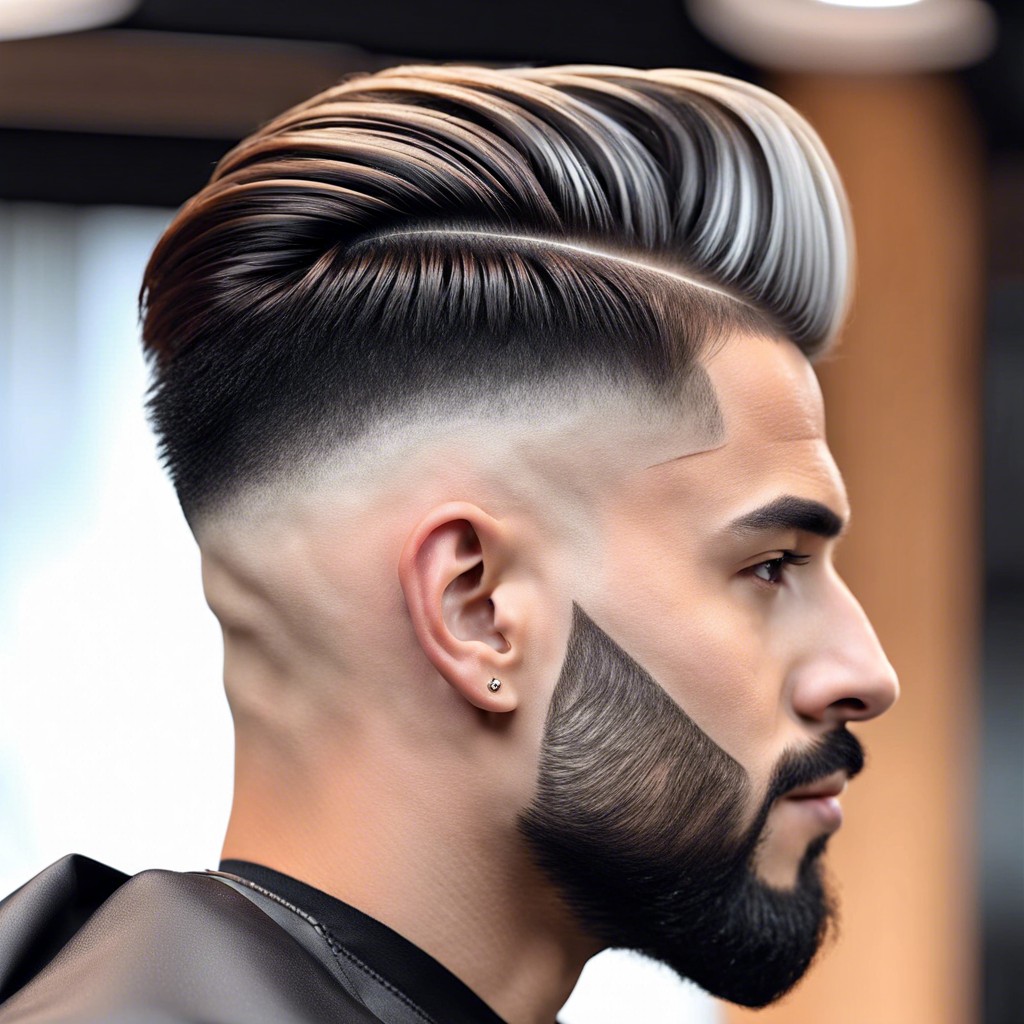
Matte pomades or waxes offer the necessary hold for a drop fade while preserving its natural look.
Lightweight, volumizing sprays can add lift to the top section without weighing down the faded sides.
For those with curly or textured hair, a curl-defining cream can enhance the contrast between voluminous top and faded sides.
The Significance of the “drop” in Drop Fade
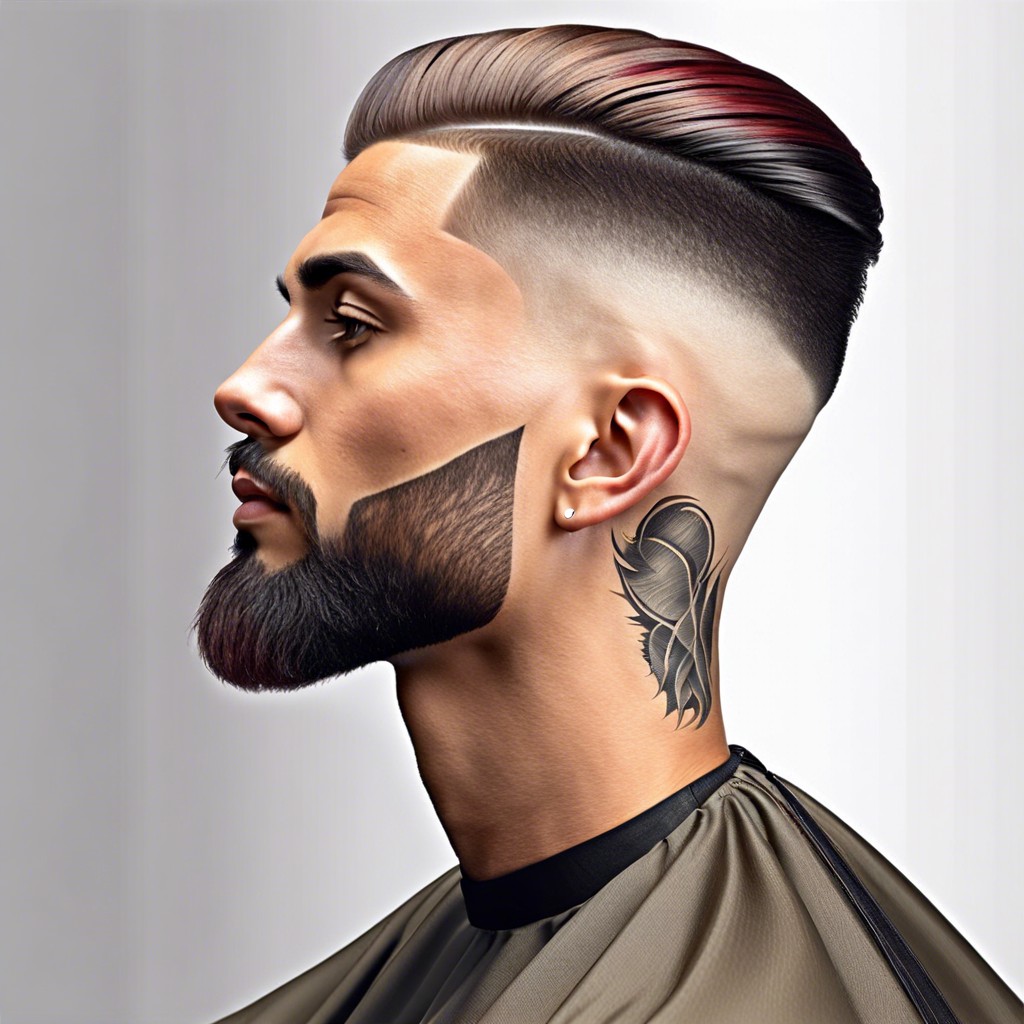
The drop in a drop fade refers to the gradual descent of the fade as it wraps around the ear and drops towards the nape of the neck. This technique contours to the natural head shape, creating a subtle arc that enhances the haircut’s flow. It distinguishes itself from standard fades by its lower, curve-following progression that adds a modern twist to the classic fade.
Drop Fade Suitability for Various Face Shapes
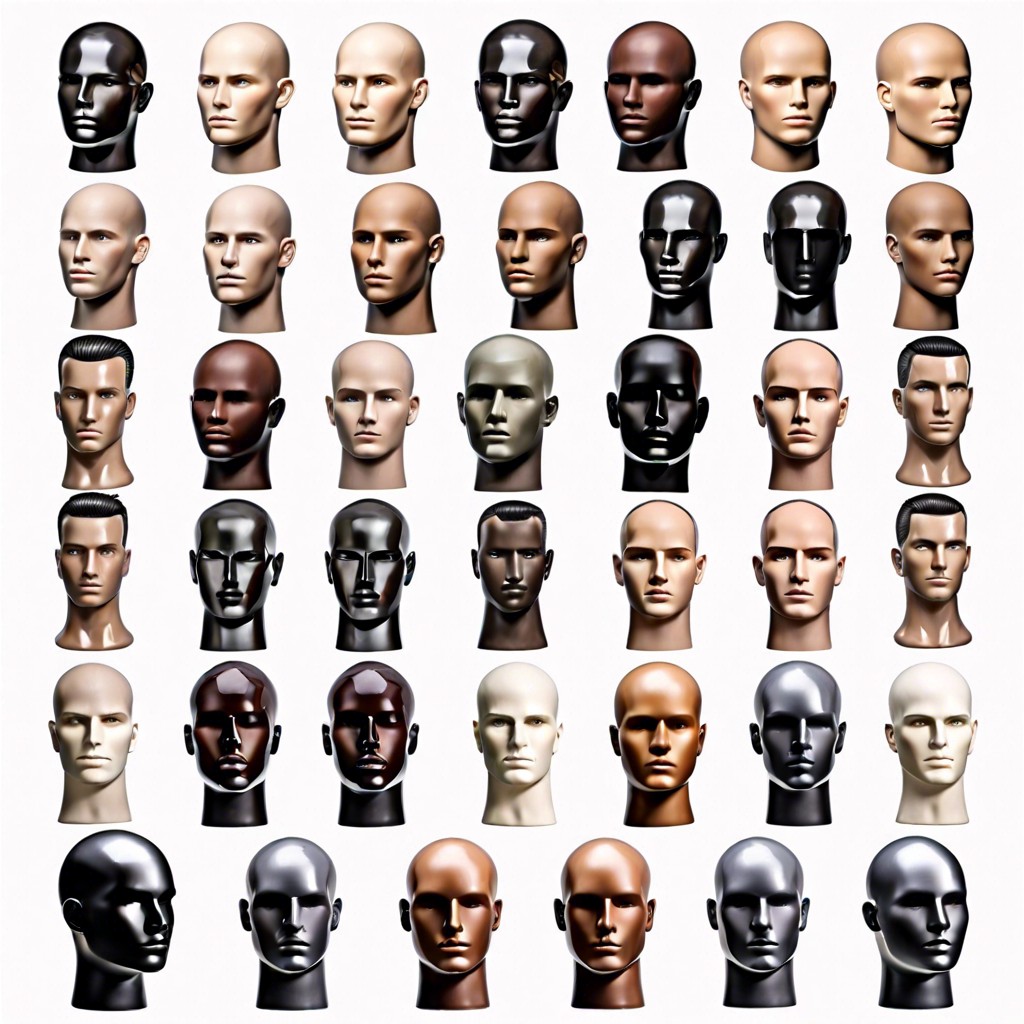
The drop fade’s tailored curvature complements the natural jawline, making it a versatile choice for oval and square face shapes.
Round faces benefit from the style’s gradient effect, which elongates the face for a balanced look.
Heart-shaped faces can use the drop fade’s low point to enhance the width of the forehead, creating a more proportionate appearance.
Step-by-step Guide On How a Barber Creates a Drop Fade
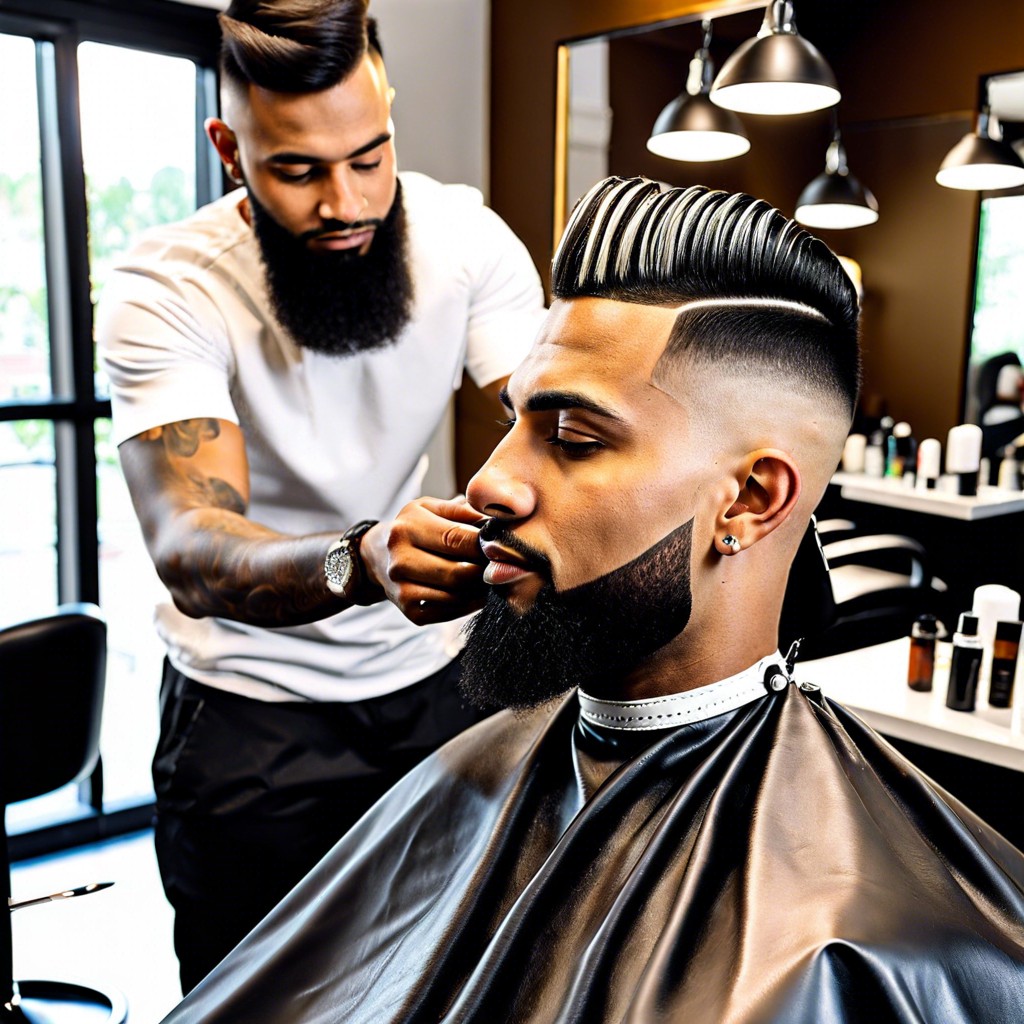
A barber starts by identifying the natural curvature of the head to determine where the fade will drop behind the ear. They then use clippers at varying lengths to achieve a gradient effect, gradually transitioning from shorter to longer hair. Gradual blending is crucial to ensure a smooth drop fade, often requiring the stylist to switch between different guard sizes for a seamless finish.
The Longevity of a Drop Fade and Frequency of Touch-ups
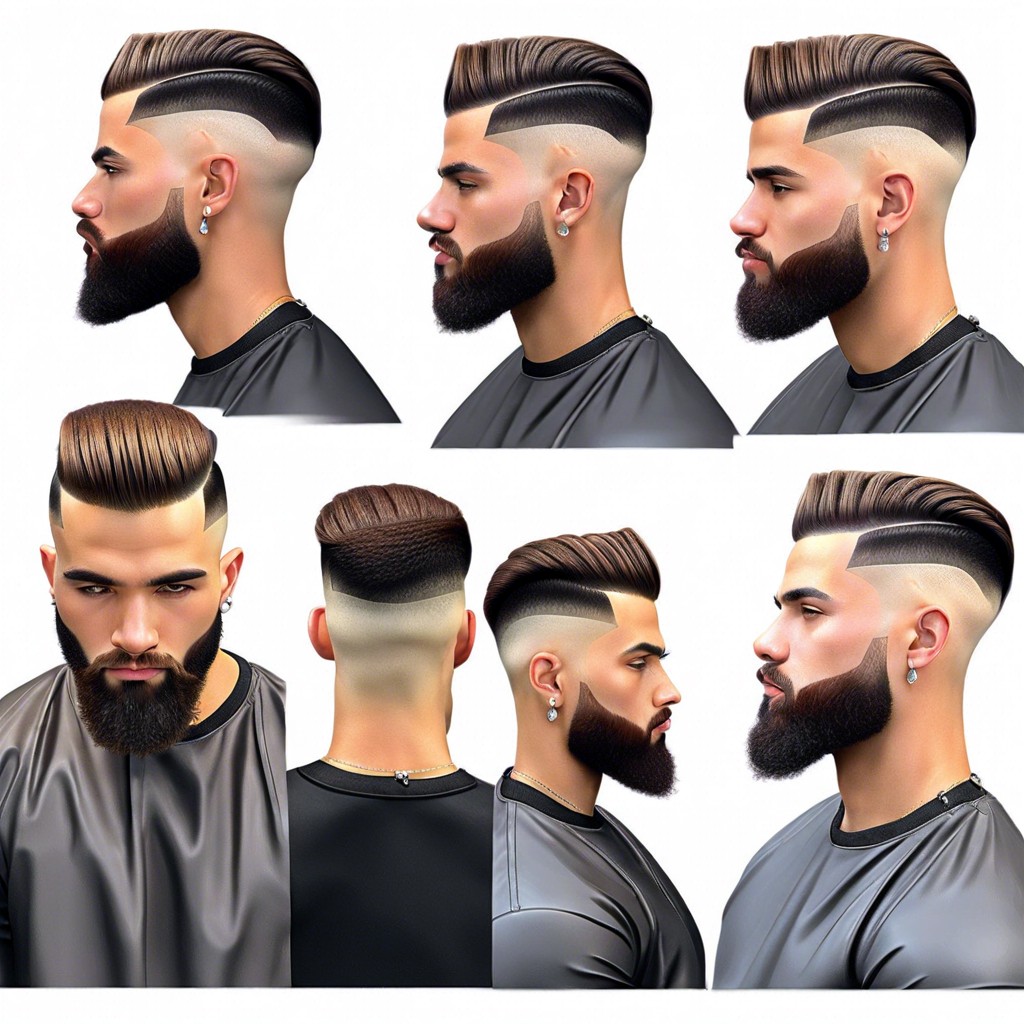
A drop fade typically requires upkeep every 2-3 weeks to maintain its sharp contours and gradient effect.
Regular touch-ups are essential for preserving the drop’s definition, as hair growth can quickly blur the meticulous fade.
To keep the style looking fresh, scheduling consistent barber appointments is advisable.
Tutorial References for DIY Drop Fade Haircuts
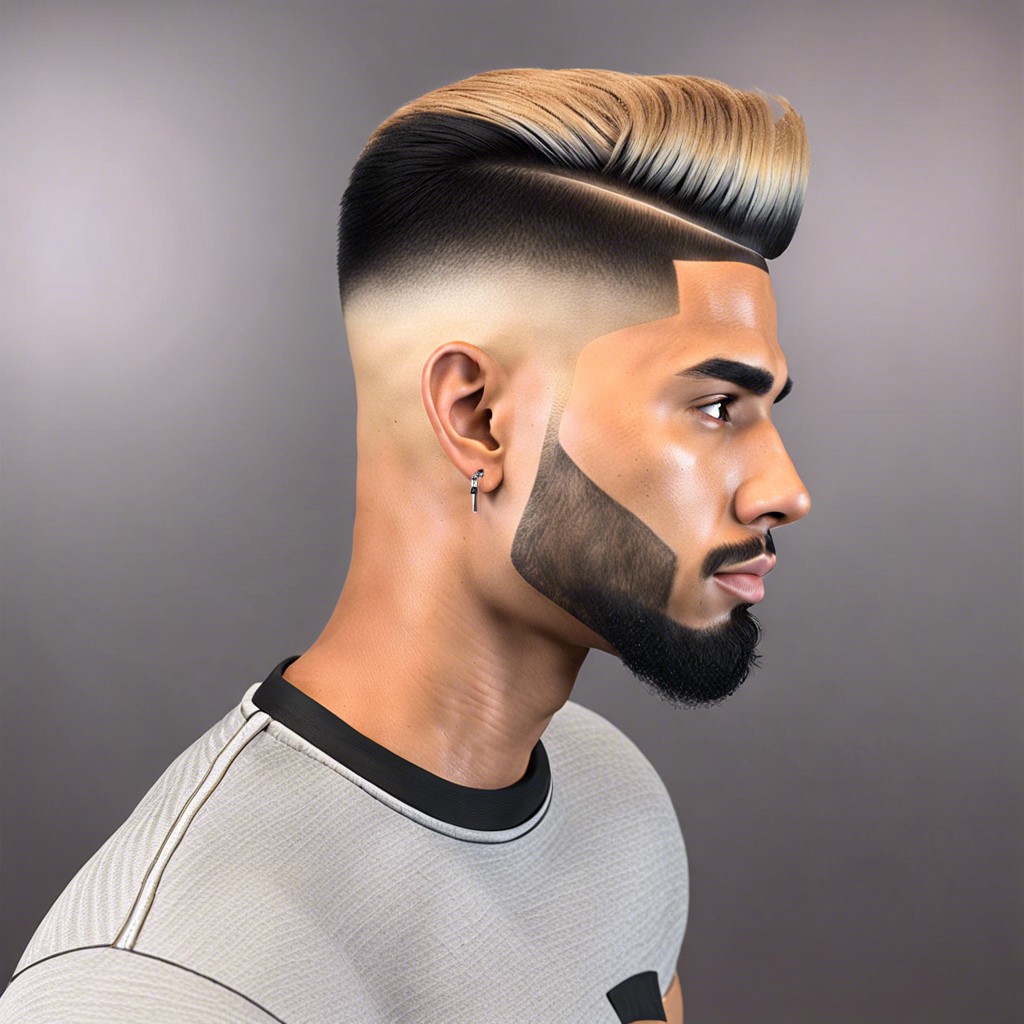
Online tutorials and video guides can be invaluable for those attempting a drop fade at home, providing visual and step-by-step instructions.
When selecting a DIY resource, ensure it’s from a reputable stylist or barber to avoid common pitfalls and achieve a professional-looking result.
Key aspects such as angle, guard size, and blending techniques are often highlighted, making the learning process more accessible and precise.
The Cultural Impact and Current Trends of the Drop Fade
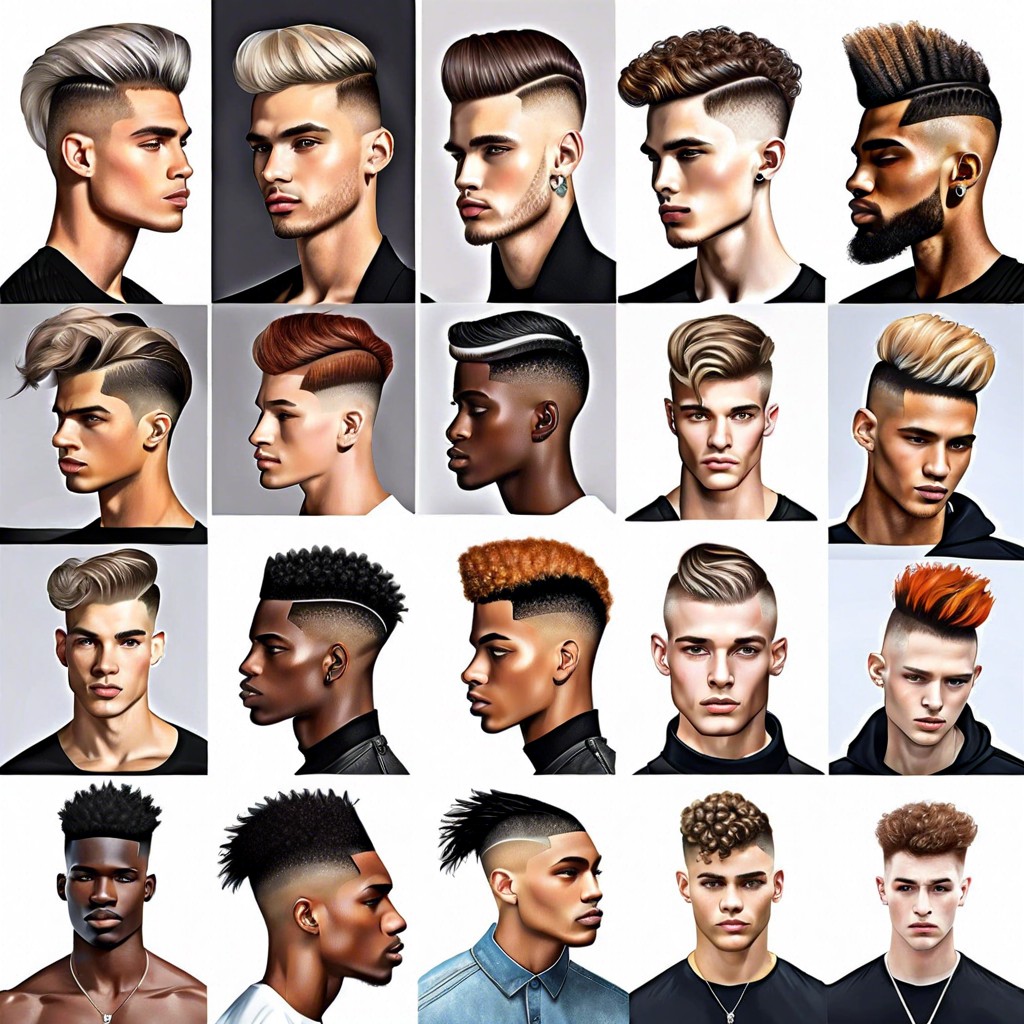
The drop fade has transcended its origins in black and Latino communities to become a mainstream style statement, symbolizing modernity and a sharp aesthetic.
As seen on runways and urban fashion scenes, this cut is often associated with the cutting-edge music industry artists, reinforcing its image as a hairstyle of the youth and culturally savvy.
The trend’s adaptability allows it to continually evolve, integrating elements from various eras and genres, thus maintaining its relevance in the ever-changing world of fashion.
